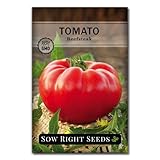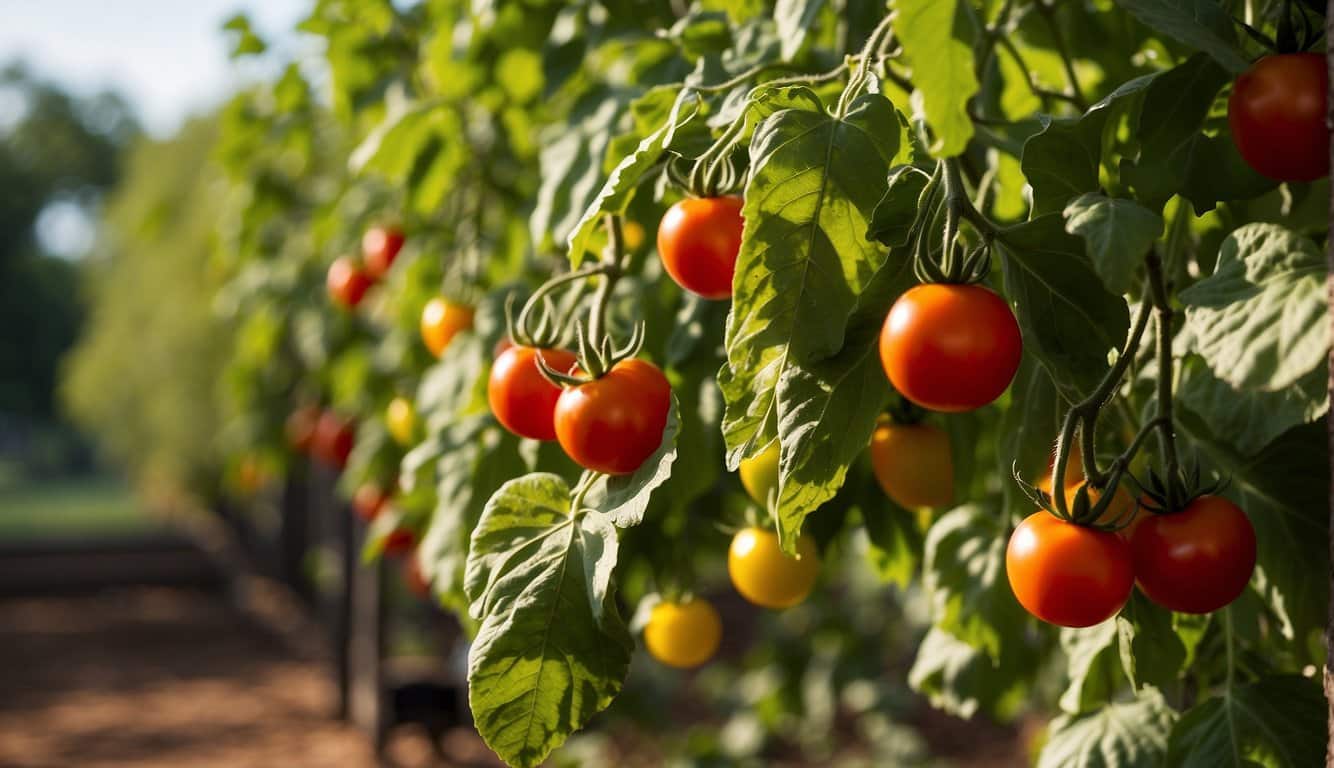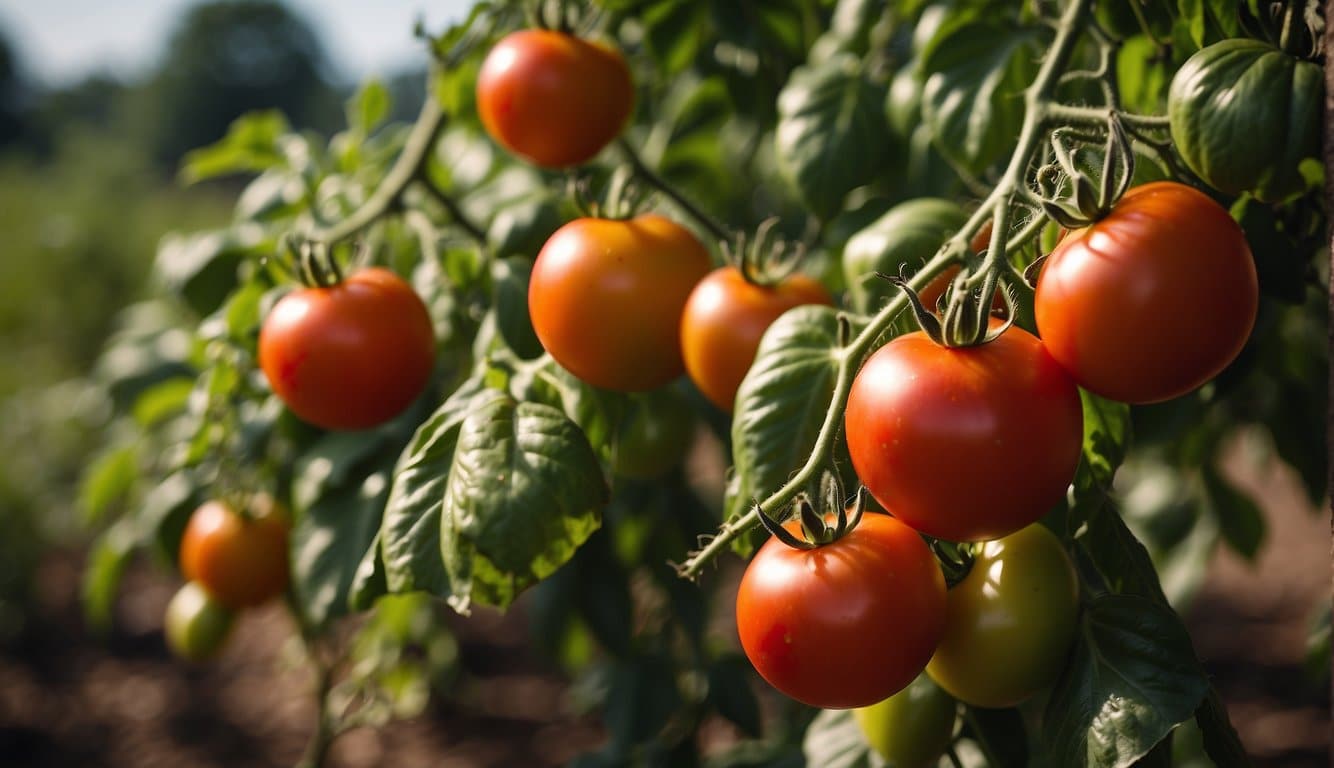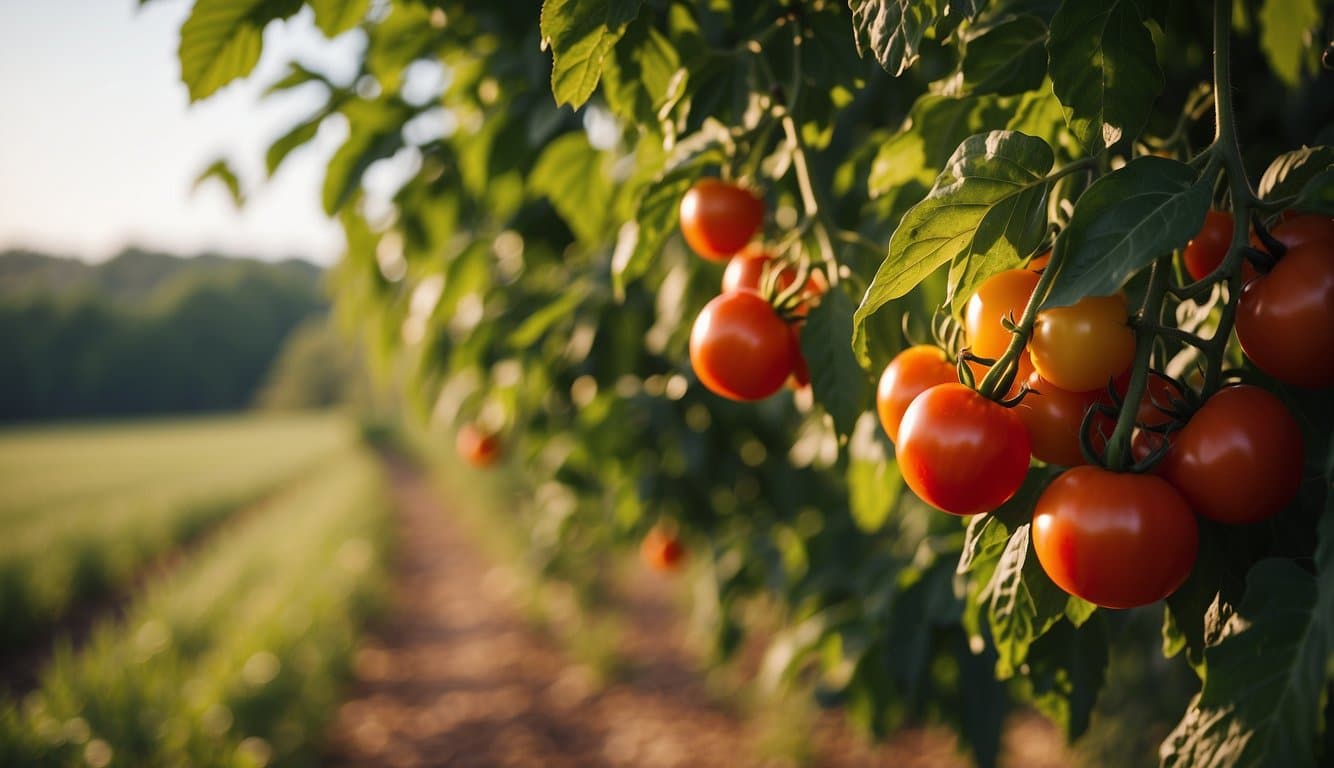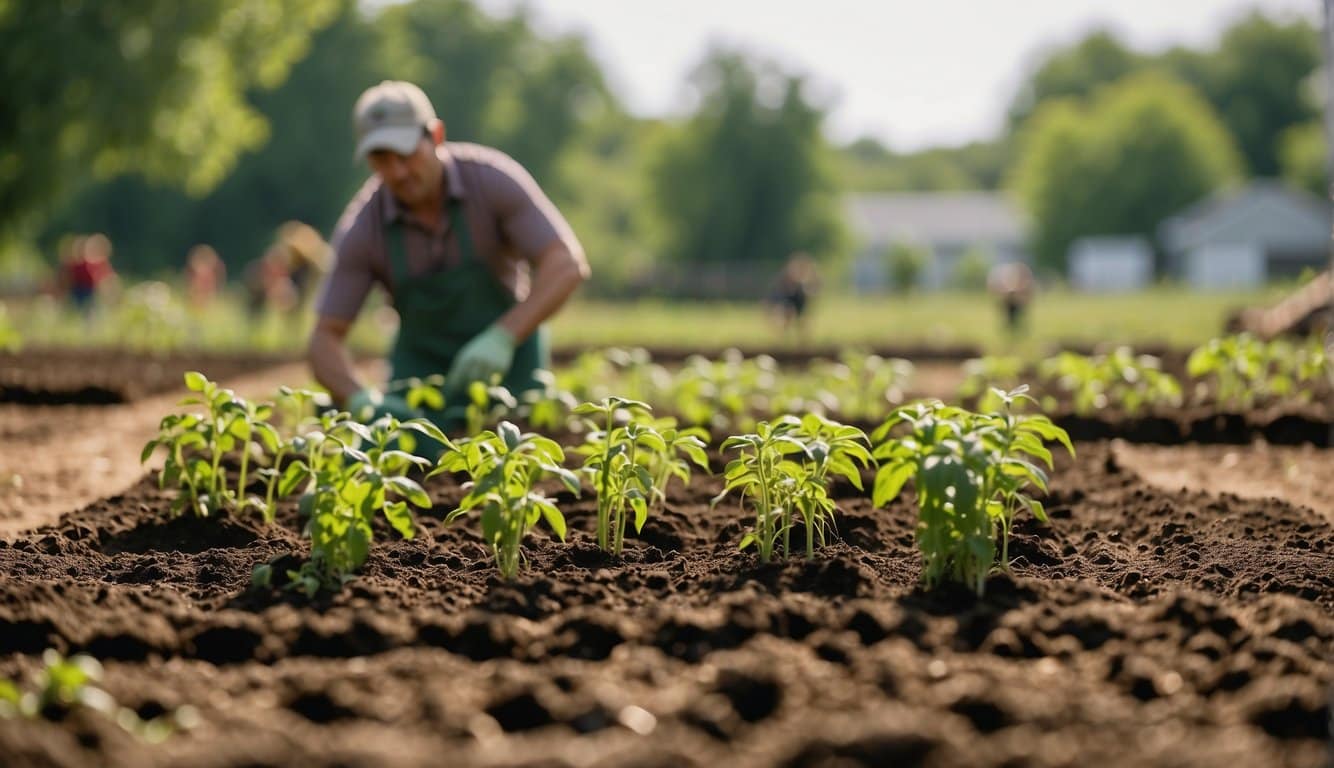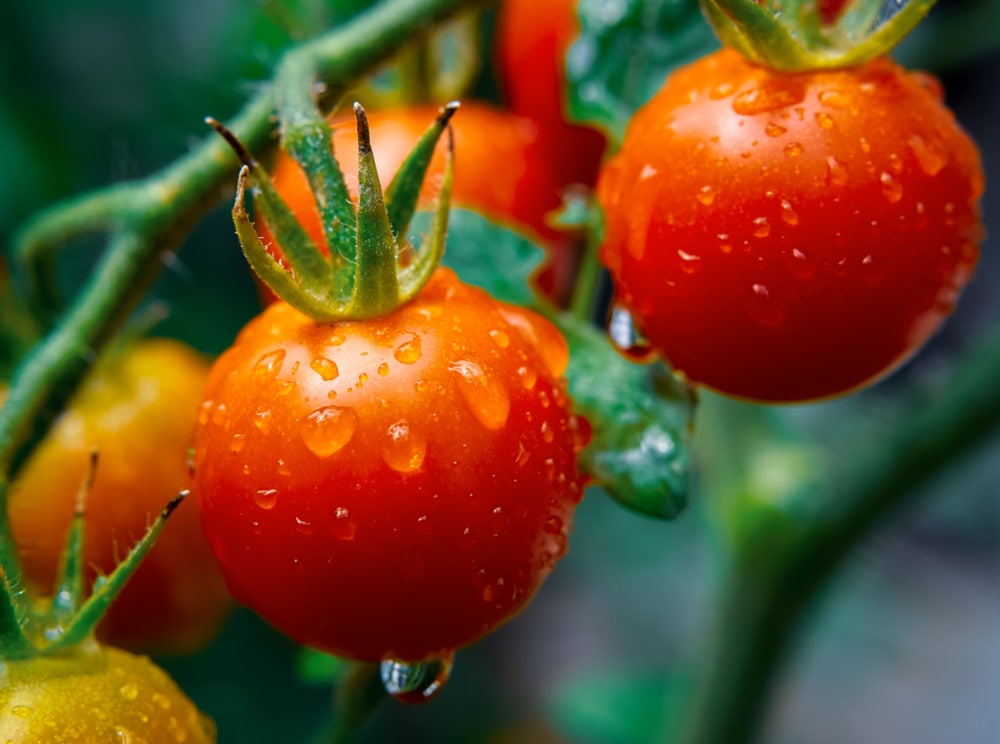| Question | What’s the best time of year to plant tomatoes in Arkansas? |
|---|---|
| Answer | After the last frost date in spring. |
| More Info |
|
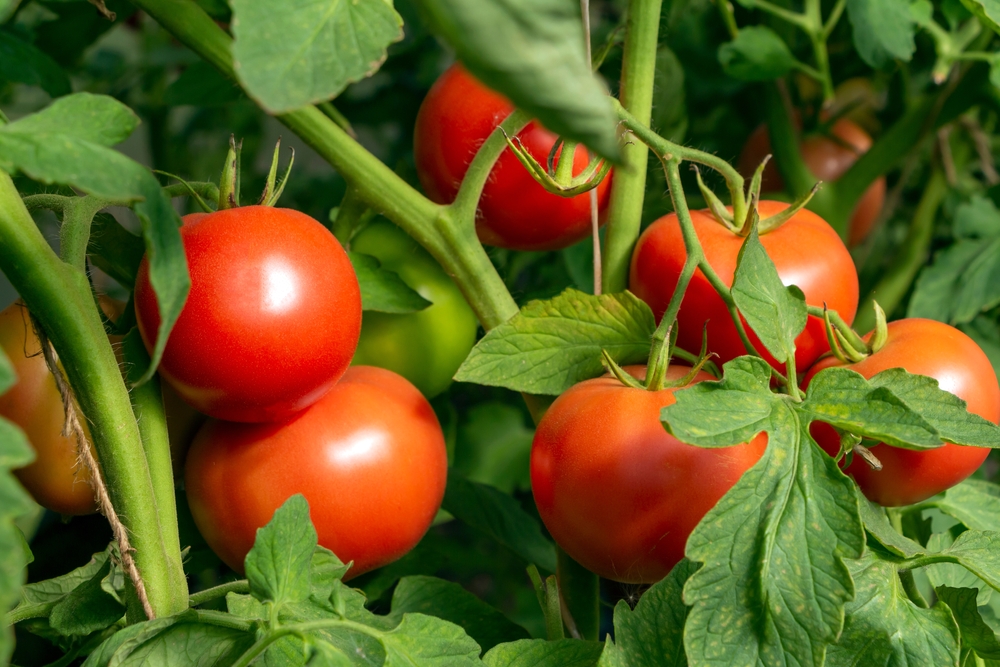 In Arkansas, the best time to plant tomatoes is after the danger of frost has passed in the spring. This is usually from late March to early April, depending on your specific location within the state.
In Arkansas, the best time to plant tomatoes is after the danger of frost has passed in the spring. This is usually from late March to early April, depending on your specific location within the state.
It’s advisable to start tomato seeds indoors about 6-8 weeks before your planned outdoor planting date. This allows the seedlings to be strong enough to handle the transition to outdoor conditions.
For those aiming for a fall tomato crop, consider planting in late June to early July. Local extension services or gardening groups can provide more precise planting times based on regional climate conditions.
Tomato Varieties that Do Well in Arkansas
When gardeners in Arkansas select tomato varieties, they aim for types that can endure the state’s hot and humid summers while delivering delectable fruit.
Here’s a curated list of tomato cultivars that perform exceptionally well in Arkansas’s growing conditions:
- Arkansas Traveler: Bred to thrive in Arkansas, this heirloom variety is heat-tolerant and produces medium-sized, pink fruits known for their rich flavor.
- Celebrity: This variety stands out due to its disease resistance and its ability to produce consistently in Arkansas’s climate, yielding medium to large red fruits.
- Sun Gold: Although it requires loamy soil, Sun Gold is a favored choice for its sweet, golden cherry tomatoes that are perfect for eating fresh from the vine.
- Cherokee Purple: With a unique, deep purple hue, these tomatoes reach maturity in 70 days, and their rich, smoky flavor makes them a second-to-none choice for Arkansas gardens.
- Cherry Tomatoes: Ideal for salads and garnishing due to their sweet taste and attractive appearance, cherry tomatoes are among the easiest to grow in Arkansas.
These varieties are well-suited to Arkansas’s mix of warm, sunny days and cooler nights.
Ensuring they are planted in well-drained, loamy soil and receiving sufficient sunlight will help them flourish.
Gardeners should consider starting seeds indoors and transplanting seedlings after the threat of frost has passed to achieve the best results.
Climate Zone Matters
The success of planting tomatoes in Arkansas significantly varies according to the state’s hardiness zones, which range from 6a to 8a.
These zones dictate not just when to plant, but how gardeners should prepare for tomato cultivation throughout different regions.
In the cooler zone 6a, growers should anticipate the last frost date and prepare to plant tomatoes in the protection of indoor environments earlier in the season.
Starting seedlings indoors allows them to mature in a controlled climate before transplanting outdoors. Here, the window for planting outside typically falls in late April, when the danger of frost has subsided.
Zone 7a, encompassing much of central Arkansas, experiences a slightly warmer climate.
This mid-zone benefits from an earlier planting time, generally a few weeks ahead of the schedule for zone 6a.
Gardeners are advised to monitor local frost dates and be prepared to shield young plants with covers if a sudden frost threatens.
The warmest area, zone 8a, offers the most extended growing period for tomatoes in Arkansas.
With the luxury of warmer early spring temperatures, planting can occur in early April. However, consistent attention to weather forecasts is imperative to ensure a surprise frost doesn’t damage young plants.
| Zone | Recommended Planting Time |
|---|---|
| 6a | Late April |
| 7a | Mid-April |
| 8a | Early April |
Understanding one’s local climate zone and its corresponding last frost date is crucial for a successful tomato-growing season.
By aligning planting dates with these zones, Arkansas gardeners can optimize their crops for robust growth and fruitful harvests.
Success is in the Soil
When planting tomatoes in Arkansas, soil preparation is paramount for a bountiful harvest. Good soil provides the foundation for strong plant growth and productive tomato yields.
Tomatoes thrive in well-drained loamy soil that prevents water from pooling around the roots, which could lead to root rot.
The soil should be rich in organic matter, which gardeners can ensure by incorporating compost or well-rotted manure into the soil before planting.
Soil pH is another crucial factor.
Tomatoes prefer a slightly acidic to neutral pH, ranging from 5.8 to 7.2.
Testing the soil pH in advance allows gardeners to adjust if necessary, using lime to raise the pH or sulfur to lower it.
Here is a quick checklist for soil readiness:
- Texture: Light loamy soils that allow roots to expand
- Drainage: Well-draining to prevent water-logged roots
- Organic Matter: Compost or manure mixed in to enrich
- pH Level: Between 5.8 and 7.2, lime or sulfur to adjust
Regular soil testing is recommended; it informs the gardener about the need to amend the soil for optimal plant health and productivity.
Proper soil preparation sets the stage for tomato success in Arkansas’ varied climate.
Tomato Planting Timeframe
In Arkansas, gardeners should mark their calendars for tomato planting between April and June.
The precise timing within this window hinges on the variety of tomato one wishes to cultivate and the specific microclimate of their garden.
Starting Indoors:
For those who commence with seeds, a lead time of 40 to 60 days before transplanting outdoors is vital.
This method typically mandates beginning seeds indoors around late February to early March.
Understanding Frost Dates:
- Last Average Frost: Tomato plants are susceptible to frost. It is crucial to determine the area’s last average frost date and then count backward by six to eight weeks. This creates a safeguarded timeline for seed starting.
- Soil Temperature: Soil should be consistently at or above 60°F, ensuring a nurturing environment for newly transplanted tomato plants.
Outdoor Transplanting:
- Ideal Window: Late April to mid-May offers the optimal planting window for Arkansas gardeners. Yet, they may extend planting to the end of May or early June, depending on weather patterns.
- Sunlight and Temperature: Tomatoes thrive in spots receiving 6-8 hours of sunlight daily, with daytime temperatures in the 80s (°F) and a night-time drop to the 50s or 60s (°F).
Here is a simple guideline table for planting tomatoes in Arkansas:
| Tomato Type | Indoor Start | Outdoor Transplant |
|---|---|---|
| Early Varieties | Late Feb | Late April |
| Midseason Varieties | Early Mar | Mid-May |
| Late Varieties | Mid Mar | Late May/Early June |
Careful attention to these times and climate conditions will increase the chances of a bountiful tomato harvest in the Arkansas growing season.
You’ve Planted Them, Now Let’s Keep Them Alive
After successfully planting tomatoes in the fertile Arkansas soil, gardeners should focus on the essentials of care to ensure their tomatoes don’t just survive, but thrive.
Optimal care involves meticulously balancing several environmental factors.
Sunlight: Tomatoes require abundant sunlight. Gardeners should ensure their plants receive at least 6-8 hours of direct sunlight daily.
Watering: Consistent watering is key.
These plants prefer deep, weekly irrigations that encourage deep root growth, rather than daily light sprinklings.
Approximately 1-2 inches of water per week is sufficient, but one should adjust based on rainfall and soil type.
Temperature: These warm-weather crops flourish in temperatures ranging from 55-85°F.
Gardeners should protect the plants from late frosts by covering them overnight and, if necessary, provide shade during intense midsummer heat.
Nutrient Management: Fertilization should be approached with a plan that balances the needs of the tomato plant:
- Nitrogen: For leafy growth
- Phosphorus: For root and fruit development
- Potassium: For overall health
A simple table for fertilization:
| Stage of Growth | Nutrient Focus |
|---|---|
| Planting | Balanced mix |
| Flowering | Lower nitrogen |
| Fruiting | Phosphorus and potassium enrichment |
Frequently Asked Questions
When planting tomatoes in Arkansas, timing is crucial for success. These FAQs are designed to clarify the optimal planting times and practices for tomato cultivation in the region.
Which month is ideal for planting tomatoes in Arkansas?
In Arkansas, the ideal time to start tomato seeds indoors is from late February to early March. Transplanting seedlings outdoors should be done after the last frost, typically in April.
Can tomatoes be cultivated in the same location annually?
Tomatoes should not be planted in the same location year after year. Crop rotation helps prevent soil-borne diseases and nutrient depletion.
How late in the season can tomatoes still be planted in Arkansas?
Tomatoes can be planted as late as June in Arkansas, although it reduces the growing season and may impact yield.
What varieties of tomatoes are most successful in the Arkansas climate?
The Arkansas climate is well-suited to a range of tomato varieties, particularly heat-tolerant ones. Early-maturing varieties are recommended to beat the intense summer heat.
What is the recommended timeframe for planting tomatoes in Arkansas’s climate zones?
For Arkansas’s USDA Hardiness Zones 6a through 8a, start seeds indoors 6-8 weeks before the last frost.
Transplanting should occur after the danger of frost has passed, generally in April.
Are there specific tomato cultivars recommended by the University of Arkansas for local gardens?
The University of Arkansas recommends several cultivars that perform well in the state’s varying conditions. These include ‘Arkansas Traveler’ and ‘Pink Brandywine.’
Last update on 2025-04-19 / Affiliate links / Images from Amazon Product Advertising API
